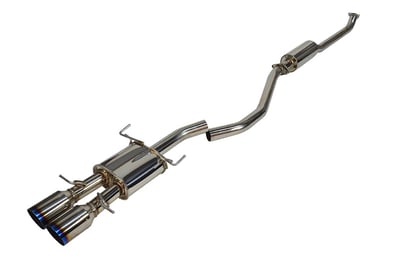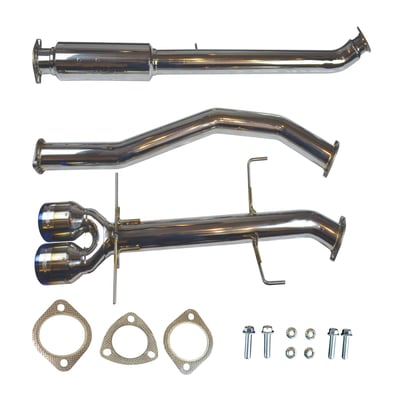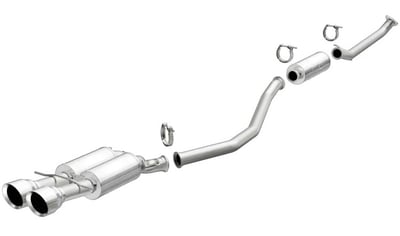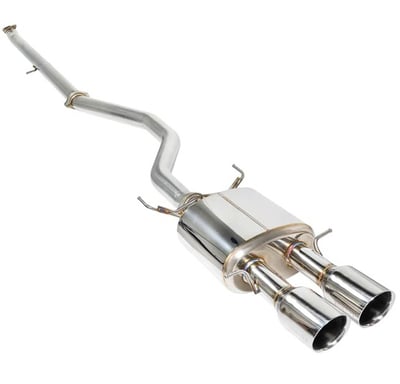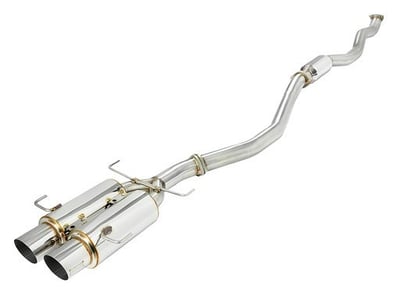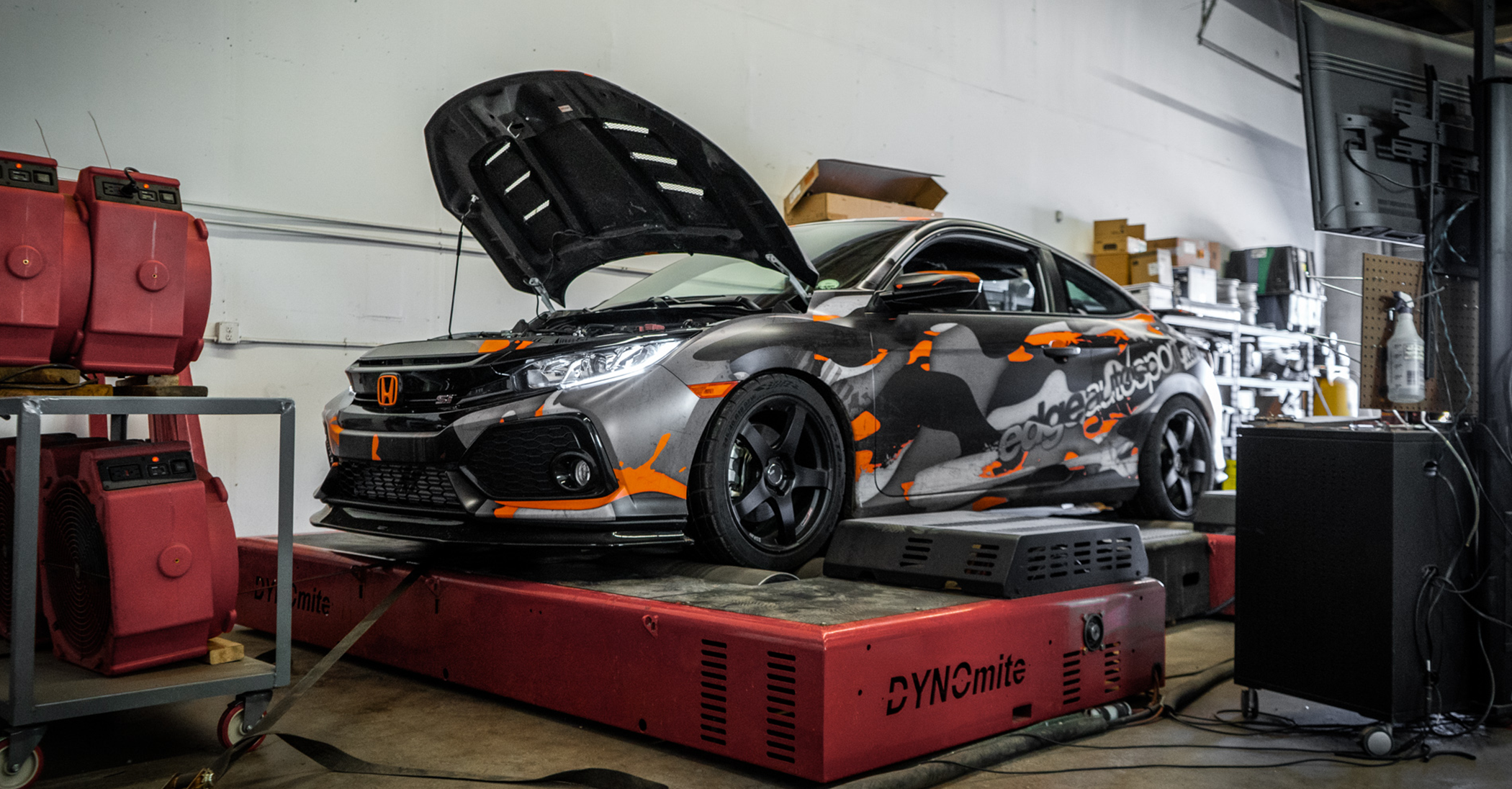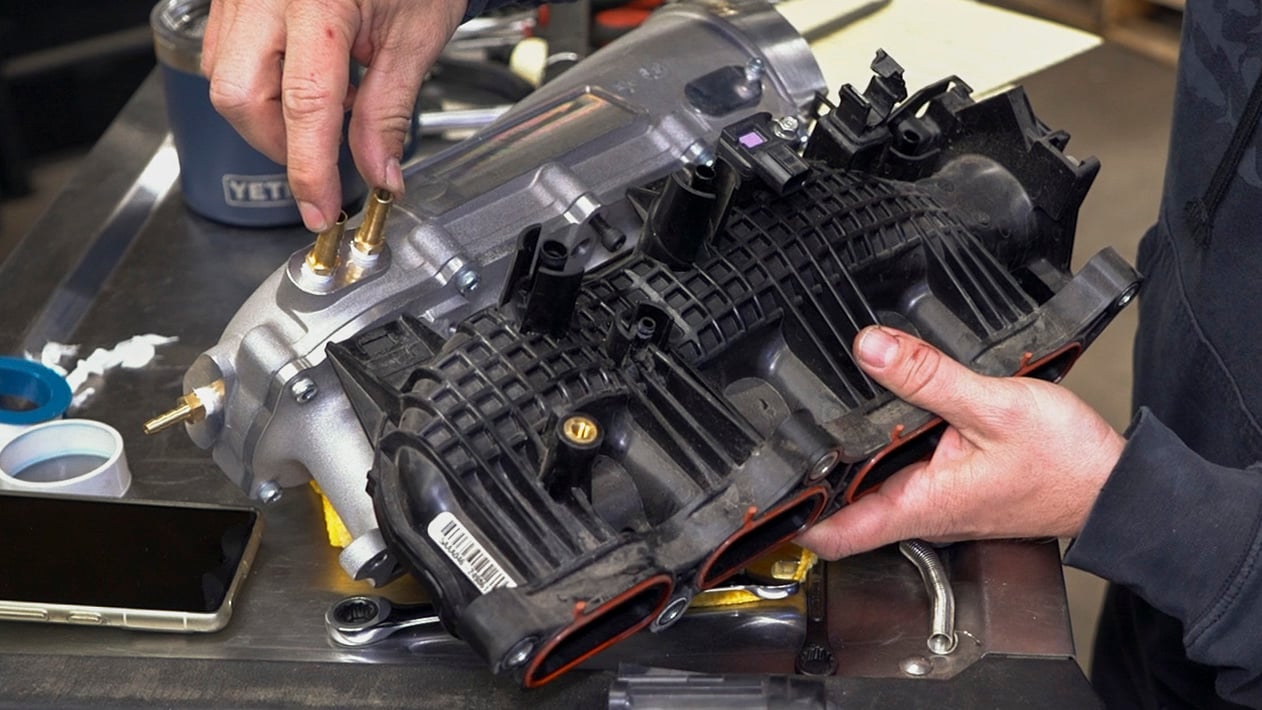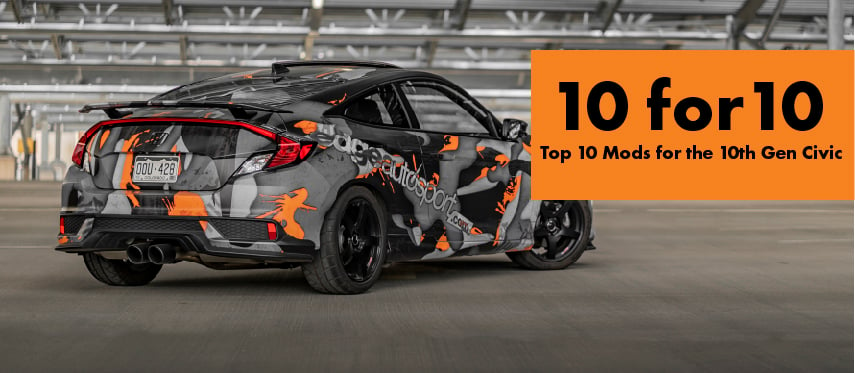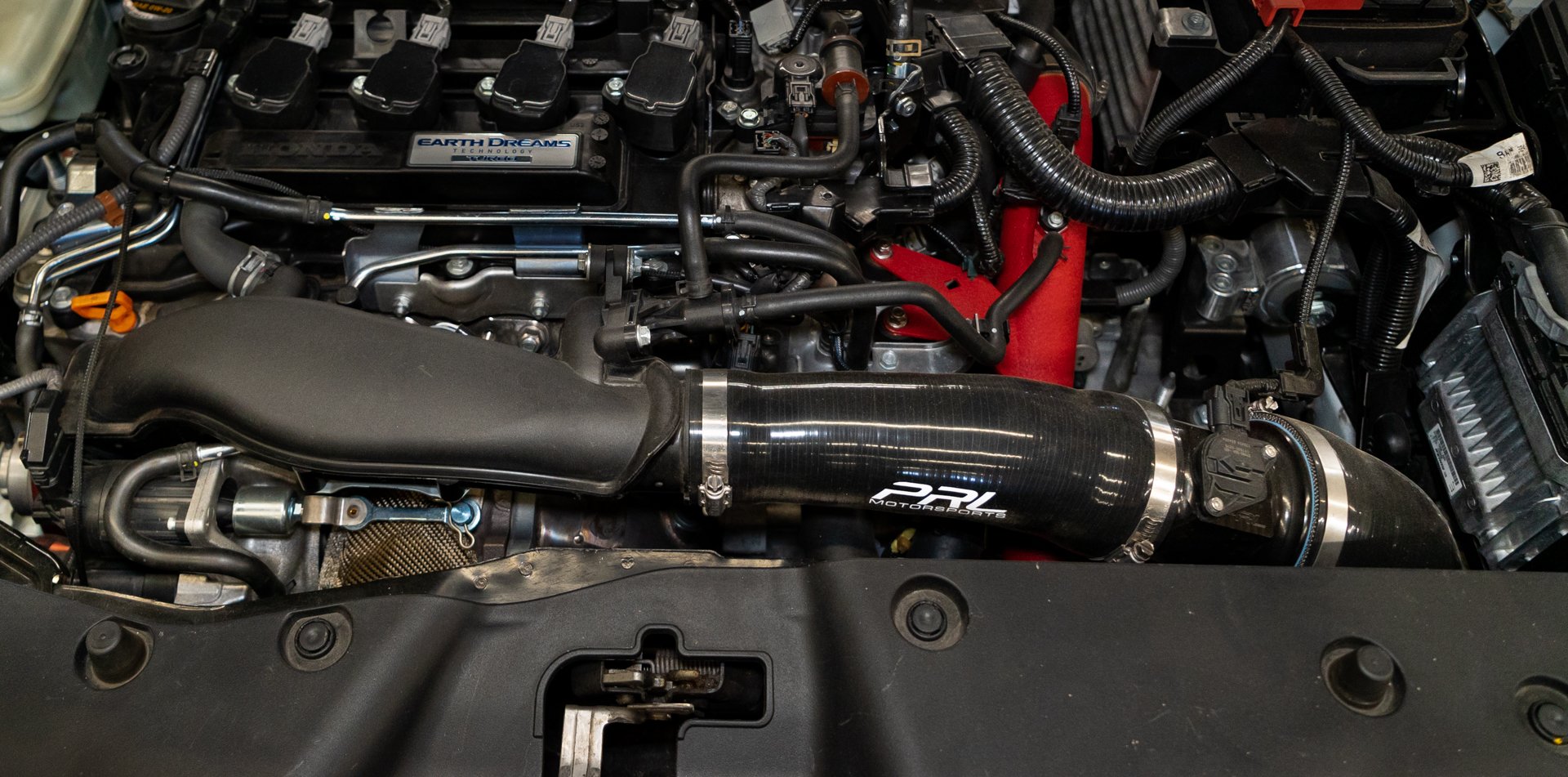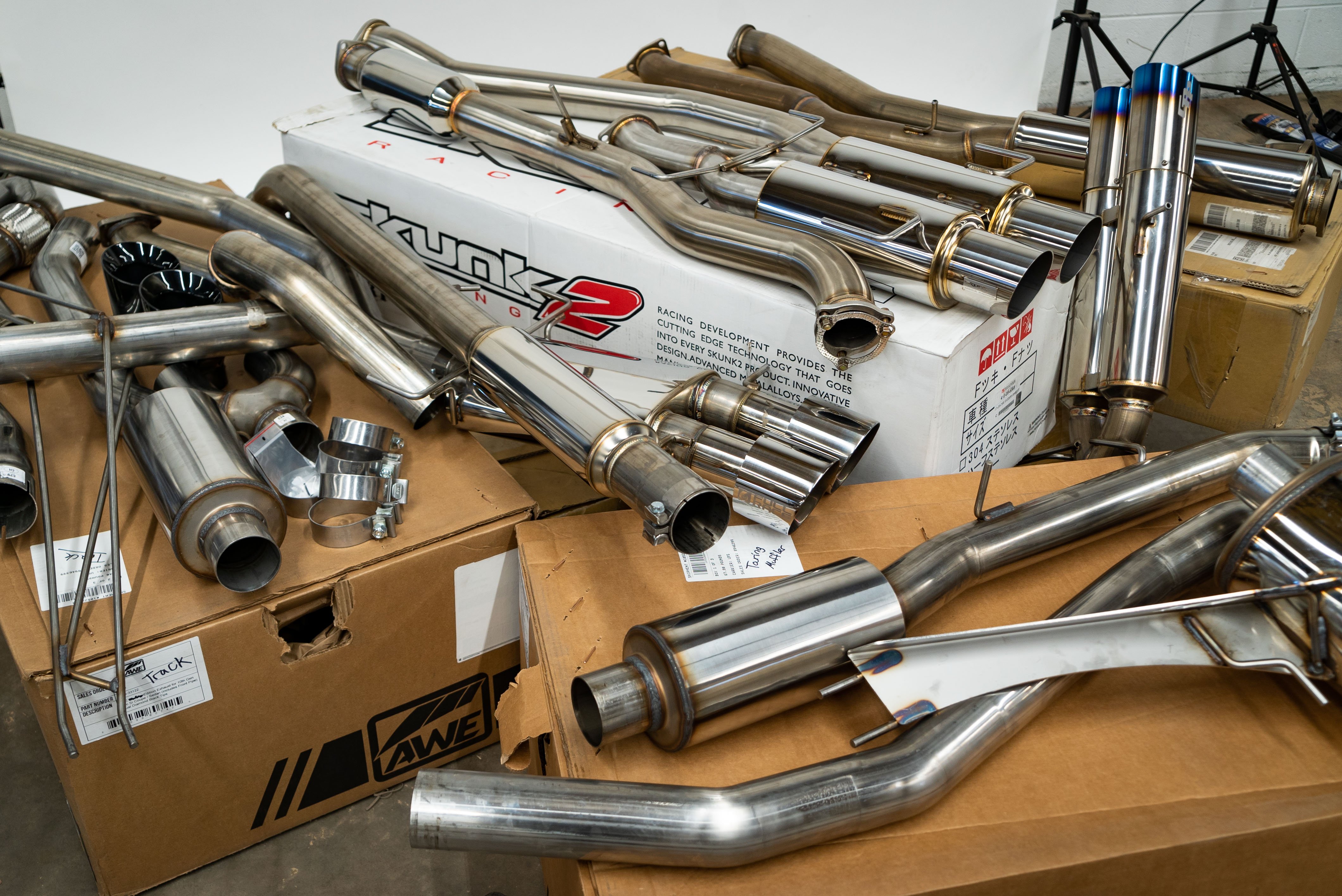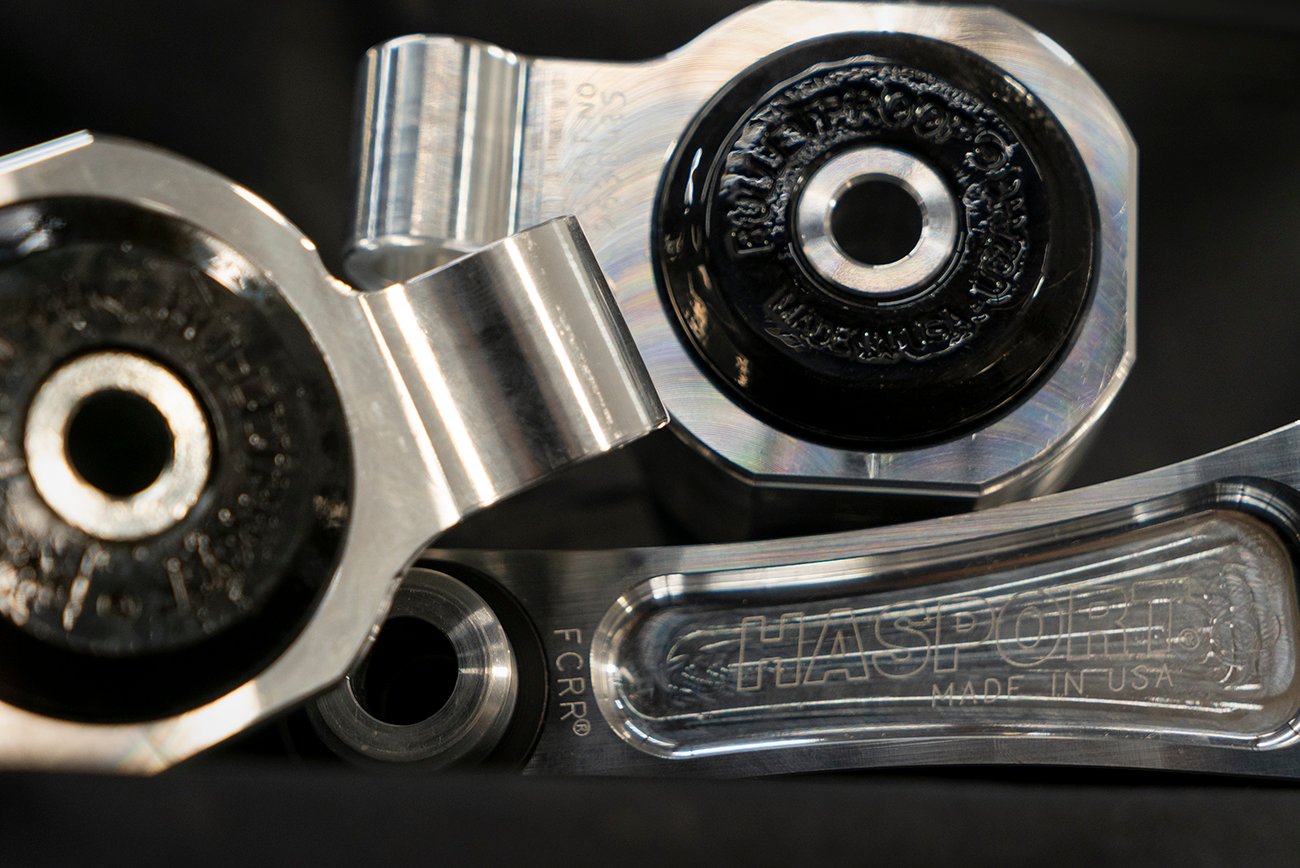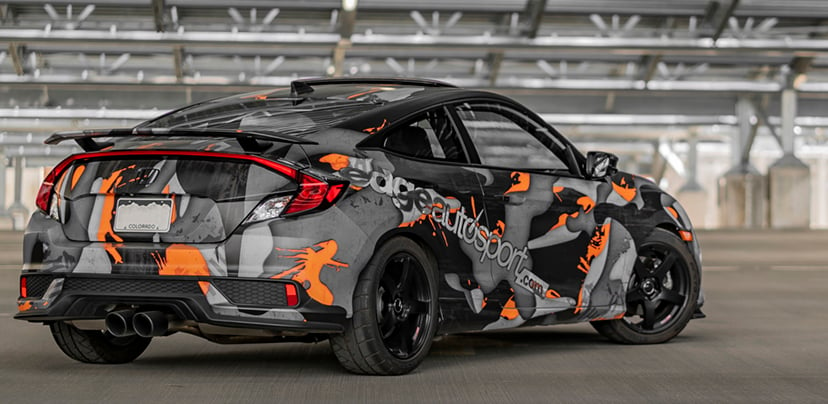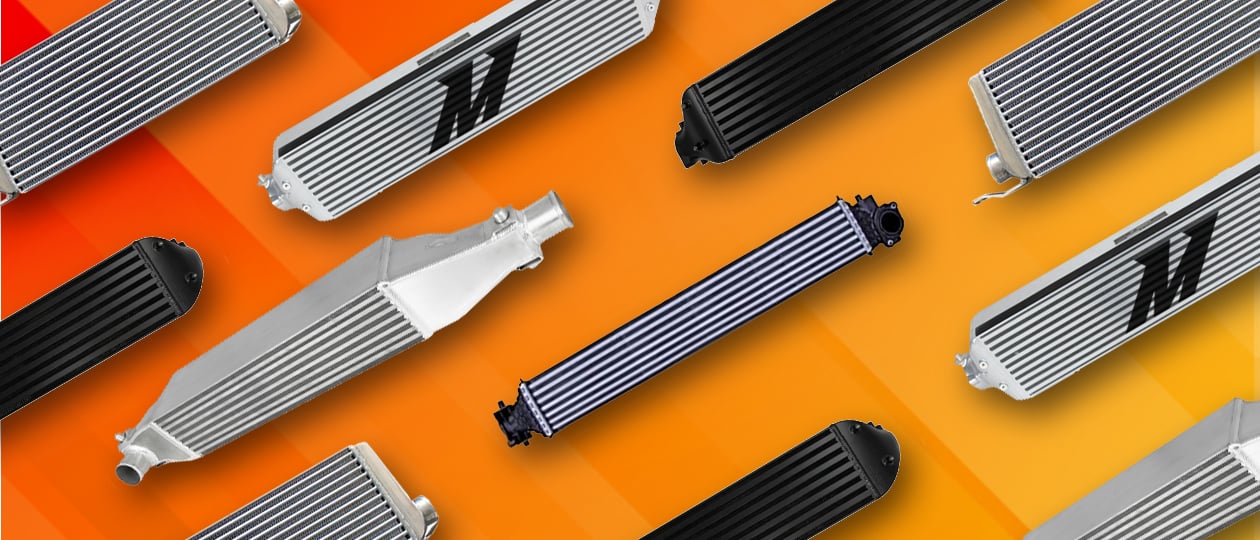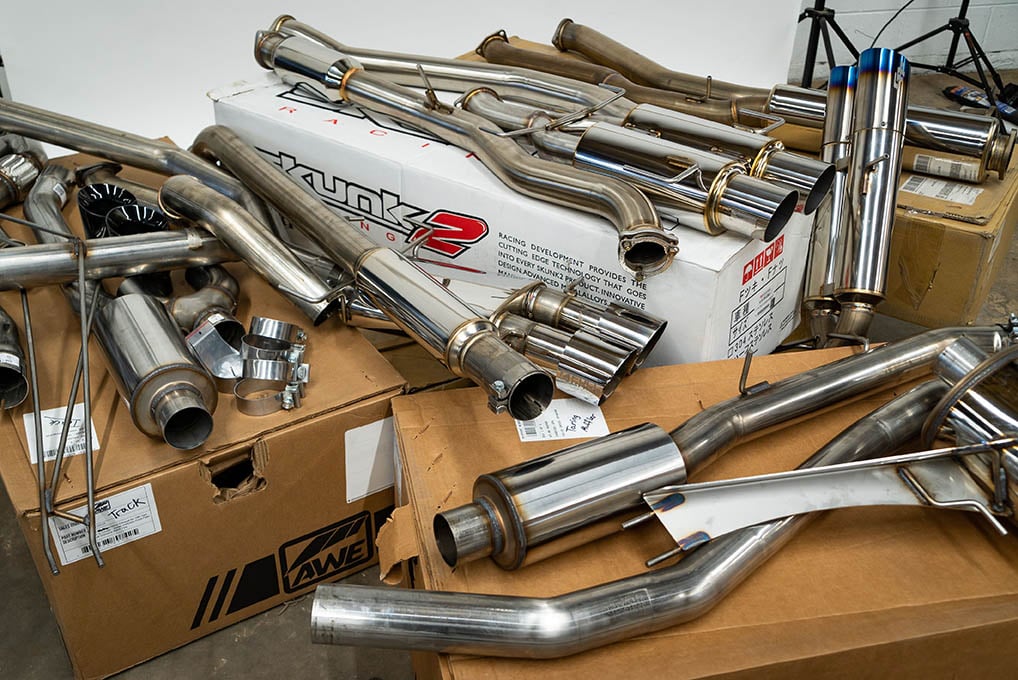
If you're modding your 10th gen Civic, you most likely fit into one of two groups. Those that have a modified exhaust or those that will have one. It's not just a common upgrade. It's almost mandatory in the world of performance. They help make more power, they're usually lighter weight, they usually look better, and best of all, they actually make noise. Shoot, some people want an exhaust and that's it. Unless you have the highest performance version of a car (like a Type R), usually you get stuck with a mundane exhaust note. Opening up the exhaust can take any car from boring and lifeless to a smile-inducing symphony of exhaust pulses finding their way to freedom.
In the case of the 10th Gen Civic Si and all other 1.5Ts, such is life with a stock exhaust. Boring. Ok maybe not completely boring because it is a fun car to drive. But without something that suggests to the outside world that you just swept through the RPM range like you own the road, the fun factor has a ceiling. Upgrading your 10th gen Civic exhaust is fun and easy, for the most part. The stock exhaust is pretty bulky which is par for the course with OEM stuff. So you'll save some weight with dang near any kit you get. As a final added bonus, you can finally get rid of the HDMI input that is your tailpipe.
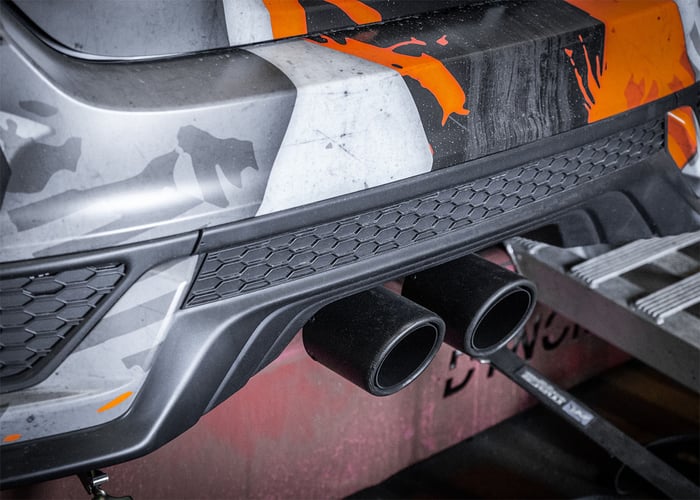
We see the question literally almost every day, what is the best exhaust for the Civic Si?
If you haven't seen our videos on 10th gen Civic Si exhaust systems, head over to our YouTube channel now to see what they sound like. We've done a total of 11 exhausts between 3 videos at the time of this writing. This doesn't cover every exhaust on this list, but it's the majority. Ultimately, this is the best way for you to choose. Sound is usually the biggest factor for anyone buying an exhaust. But there's also some details that don't get discussed much that will help you decide, which we'll include here. For the record, we cannot tell you what the best exhaust is, we can only provide information. Me telling you what the best exhaust is would be like me telling you what color car is best. There's a strong probability we disagree and neither of us are wrong. The better question is, what exhaust is right for me?
Some notes:
- Every single version is available for the coupe or sedan. Some have different part numbers, some don't. But all are available and don't have any major differences other than which body style they fit.
- We originally wanted to make a chart column for material used. After compiling all the info, every exhaust uses 304 stainless steel on here except for the Magnaflow, which uses 409 stainless steel. So instead of a column, we're disclosing this now. This is a slightly less quality stainless steel that has the tendency to develop surface rust. 304 stainless is the industry standard for exhausts because it stays clean and holds up very well over time and doesn't come with crazy costs. If you like the Magnaflow, don't let that deter you. It's not a huge deal.
- The column named "Taper at Flange" lets you know if the piping necks down to mate up to the factory front pipe (pipe between the downpipe and exhaust). A lot of companies do this to provide a more convenient connection to other OEM piping. I wish they didn't because it somewhat defeats the purpose of a true 3 inch exhaust. If you ever want to go 3" from turbo outlet all the way through, it means there would still be a slight hiccup in the piping that would create more backpressure than if it wasn't there. It's not that big of a deal but just know that if you want to go with a bigger turbo one day, it might be worthwhile to either get an exhaust that has full 3" with no taper (which is only 1 exhaust on this list!) or plan on modifying that part of your exhaust one day to make it full 3". Again, you don't even have to do that. On a 1.5L, it's honestly probably not that big of a deal.
- 2.5" vs. 3.0" - 3 inches is sort of the industry standard for turbo cars. But on a 1.5L engine, it's simply not cranking out as much exhaust as something like a 2.0L Type R, a new 2.4L turbo WRX, or anything similar that has much more displacement and a bigger turbo. If you plan on sticking with a stock turbo, don't feel like you're making a bad decision. Usually, bigger is better for a turbo exhaust. That is not going to ring true as much with this car. If you plan on getting a bigger turbo in the future, I would stick to the 3" models unless you really like a particular 2.5" model. It'll still work just fine, but might make a touch less power.
- MIG vs. TIG Welded - I won't go into the differences but they are really doing the same thing two different ways. The final product ends up as TIG being lighter and prettier to look at. You're not using as much filler material to join at the seam and it's much cleaner with no sparking and splashing of the weld pool. The bead left behind on a MIG welded product is bulkier and less colorful. Each welding style has it's tradeoffs and is more appropriate than the other in certain cases. In an exhaust system, there is no significant structural advantage to one over the other if done well. You're also never going to see it once it's under the car. In my opinion, don't put too much value on this. But if you do, we understand.
After the chart, we'll show pictures of all of them and provide our brief thoughts on them. We don't have in house pictures for every single one, but most of them we do. We have actually installed and used over half of the exhausts on this list so we're pretty familiar with what you're getting and what to expect. Exhausts are in alphabetical order so you can easily find what you're looking for.
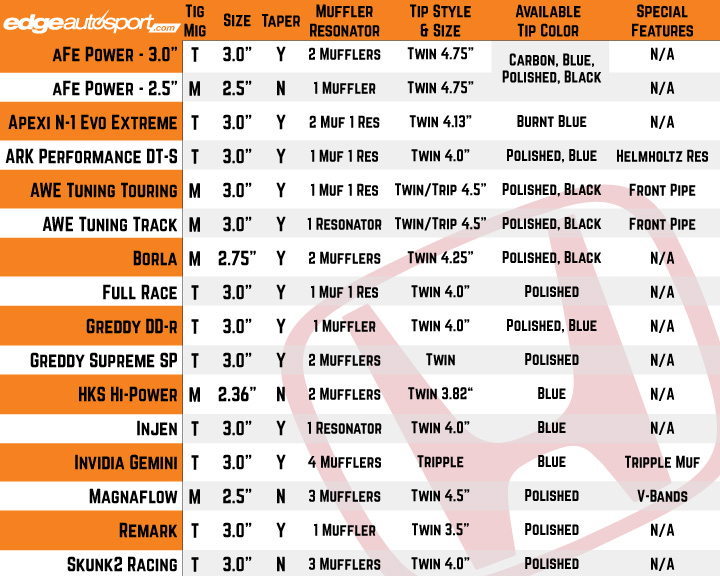
aFe Power's first of two systems they offer started out with the larger muffler, less straight through model. The primary piping is 3" in diameter and transitions to 2.5" when it splits towards each muffler. Technically, this is a true dual exit, not just dual tips. This thing is pretty quiet because of the large mufflers. With that said, it's going to be a bit on the heavier side too. But if you're looking for an exhaust that can give you a power upgrade with only a slight increased sound, this is it.
aFe released a second system a little while after their dual exit model. This is a much more straight through, performance style exhaust. However, it's 2.5" as opposed to the 3" model they initially released. It will be significantly lighter than the other version because of the straight through design and smaller piping. This is a very straightforward, simple setup.
It's hard to talk about exhausts we haven't personally tested in house but Apexi makes a good product. They are originally a JDM company that eventually made their way to the states a long time ago. This exhaust is a beautiful setup and very aesthetically pleasing. Simple, like some other exhausts, but elegant, unlike many others. For as nice as it fits and looks, it's actually a little more subtle once on the car...except for the nicely finished burnt tips. I'm actually pretty keen to try this on our shop car.
ARK Performance is next up. This is a very popular option among the 10th Gen Honda community. The most notable feature with this exhaust is the helmholtz resonator. This is the tube that comes off the primary pipe and dead ends into an expanded chamber. This feature helps the exhaust become tunable. Think about blowing into a glass bottle. Based on the volume of the cavity, you can manipulate the sound of the exhaust note. ARK has dialed in the exact tone they wanted to create with this system. And they did a good job, in my opinion.
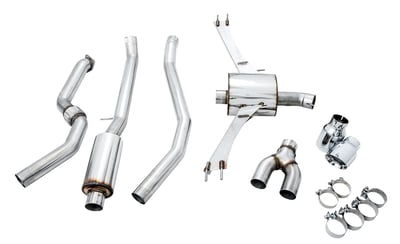
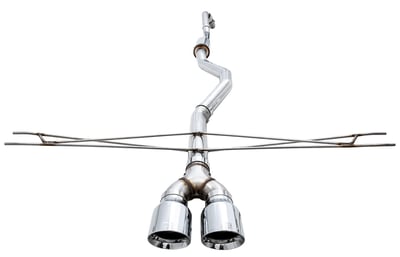 AWE Tuning Track Edition and Touring Edition
AWE Tuning Track Edition and Touring Edition
AWE Tuning is one of my favorites. The price for what you get is great. And by no means does that mean the quality is compromised. The tip options are some of my favorite here between twin and triple. They both look good and AWE's tips are quality.
The Track version features just a single resonator and is designed to be a more aggressive sounding, lightweight, exhaust setup. What impresses me most is the ability of AWE's resonator to keep the sound from ringing in your ears while still having a pretty loud note from what's basically a straight set of pipes.
The Touring edition is everything the track exhaust is but replaces the back section with a muffler. I honestly thought the touring would quiet down the sound a lot but it didn't, at least in my opinion. It just sort of controlled the sound a little better and made the exhaust sound smoother. But the volume is still there with the Touring, or at least really close.
I'll be honest, this one surprised me. Usually, I don't know why but I always just think of big box store exhaust with Borla. They probably deserve more credit than that but they've been around for so long and they're really a household name in the exhaust world. Their exhaust tones and construction are usually pretty predictable - smooth, deep, not too loud, just right. However, if you'd like your 10th gen Civic to sound like a race car simply from bolting on an exhaust, then Borla is your answer. And it doesn't sound bad like a typical raspy, drony exhaust from eBay (sorry to those I've offended).
Function and form was at the forefront when Full Race designed this exhaust. TIG welding, piping as straight as it can be, one resonator, one muffler, both in-line, and a clean twin tip to finish it off. Full Race's 10th Gen exhaust is simple, but refined. One of these has been on our own 10th Gen Si and it impressed all of us. We really like it. And with Full Race in the name, you can bet you're buying from some Honda fanatics.
I have a thing for Greddy exhausts. You can tell they're made mostly by machines. I don't care and I'm not sure that's a terrible thing anyway. They sound great. And regardless of who (or what) is fabricating them, they look amazing too. Polished piping, beautiful TIG welds all colored gold, smooth bends. There's not a lot to dislike about a Greddy exhaust. This exhaust right here is actually the one I prefer to keep on our shop car. It has just enough JDM style to it without being too over the edge. It's just right and takes on the character of the car perfectly.
The gentleman's Greddy. In the appearance and quality department, it's identical to the Greddy DD-R. The difference is the sound. The Supreme SP is a little more tame but still smooth as butter and nice at every RPM level. Don't mistake that for quiet, it still rumbles nicely. The mufflers are the one thing that stand out from the crowd. I wouldn't describe the mufflers as subtle on this setup. Some people like it, some don't. It fits good, that's for sure. But Greddy did something different with the visual presentation on this and it's up to you to judge if you like it or not.
You can't not like HKS. They're one of the original JDM tuning companies that continues to crank out high quality, well priced Japanese style parts. The Hi-Power exhaust fits this description as well. Aside from what we've come to expect with any HKS exhaust, this one is particularly quiet. It's sort of a surprise considering the smaller muffler sizing but they do a good job of controlling the sound.
This didn't make it in any of our videos (yet). Injen is a pretty straightforward setup and usually doesn't go too far out of line with creativity. This might be the most basic setup of all exhausts on this list, but by no means does that make it unworthy. Injen always fits nicely and uses polished stainless steel. This simplified setup sounds smooth and reduces complexity and weight nicely.
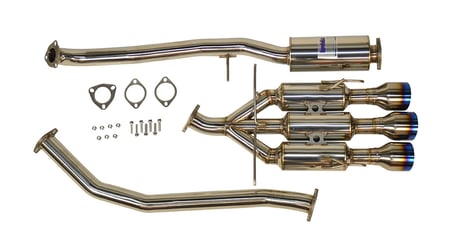 Invidia Gemini
Invidia Gemini
Invidia is a great value as well. There's usually nothing super special about their systems, in particular. They like to keep it simple. But on this kit, they went outside the box a little. It features 3 full inline mufflers for a unique triple tip exit. That's a little above and beyond what you would typically see from Invidia and it makes for a nice upgrade.
Magnaflow is also a household exhaust name. They've been around forever. This kit is minimalistic, which is a good thing to me. Nothing super fancy, just gets the job done with a good sound and not too much equipment. Magnaflow systems are MIG welded so you're not getting anything flashy, but it is functional with its very straight through design. This is a good upgrade for those looking for a quality sound but don't care about much more.
Remark likes to present their products well visually so be careful not to drool on your new exhaust when you open the box. Remark seems to be a favorite among the newer turbo Honda guys and there's no surprise why. It's a good setup and it sounds great. The Remark is really dialed in sound wise with a little higher pitch but smooth. This is sort of what I would expect a 1.5 turbo motor to sound like with an exhaust.
Skunk2 is synonymous with Honda so I'm always excited to try out their parts. The Double Barrel is appropriately named here. The tips are just extensions of the dual rear mufflers that sit side by side and really give off a clean JDM look. It gives me the Fast and Furious street car vibes in terms of appearance and the sound is actually more mature and deeper than what you'd expect from a 1.5 liter. It's also very aesthetically pleasing. This is definitely one of my favorites. And at the end of the day, it's the only one on this whole list that is a true 3" all the way from flange to tips.
My Top Picks
Alright, I told you I can't answer the question, "What is the best exhaust for the 10th Gen Civic Si". I still can't. But I'm going to give you my top 5, in order. I haven't tried every single exhaust on the full list so my mind could be changed one day, at which point, I'll surely forget to update the blog. But for now, here's what I like the most.
- Skunk2 Racing
- Greddy DDR
- ARK Performance
- AWE Tuning Track Version
- Full Race
Honestly though, I would run probably every exhaust on this list on my own car except for maybe two of them, and that's only because they're not my style.
Hope you enjoyed the comparison. Let us know if you have any questions or comments! If you're ready to shop for your own exhaust, you can do that right here.
I'm the founder of Edge Autosport and I remember first getting into cars in high school. I read all the magazines, bought a bunch of technical books, and finally got to start wrenching around the age of 19. I really enjoy modding and being able to live out a passion is truly awesome. I wouldn't change a thing.
Topics:
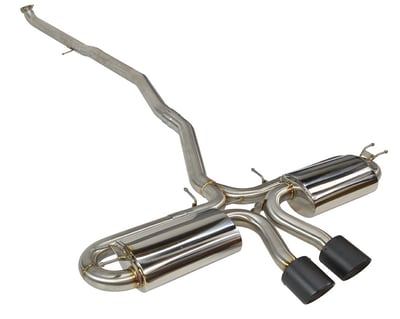
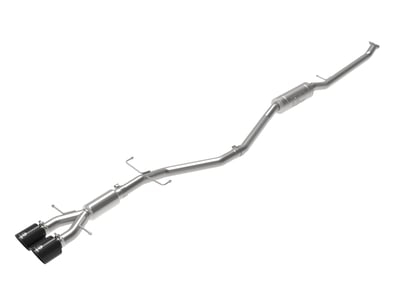
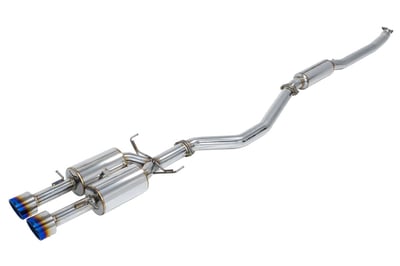
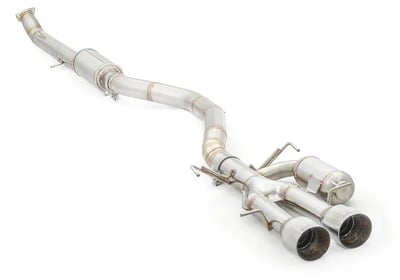
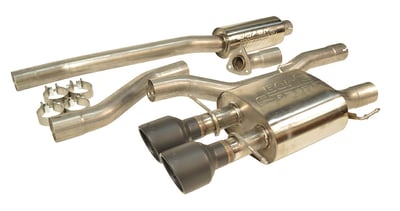
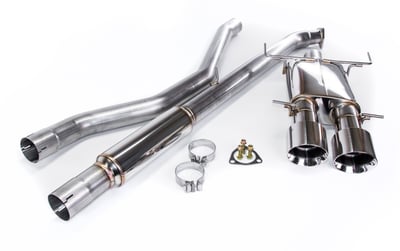
-DDRWeb.jpg?width=400&height=267&name=10158600%20(1)-DDRWeb.jpg)
-SUPERweb.jpg?width=400&height=266&name=10158216%20(3)-SUPERweb.jpg)
